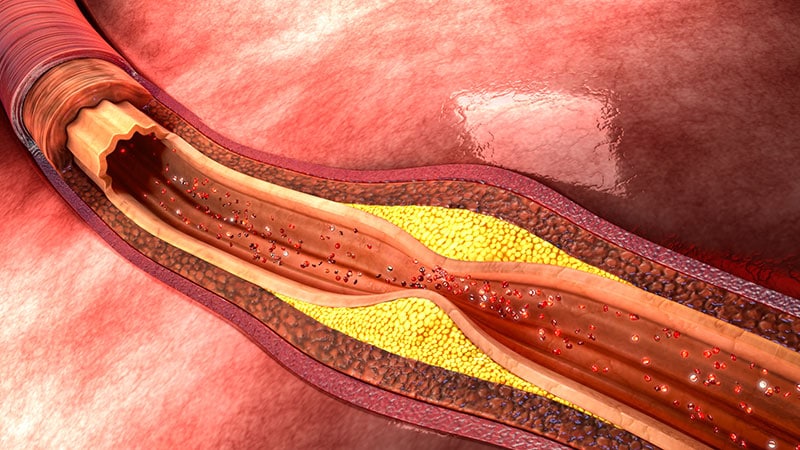Top Updates in 2025 ACS Management Guidelines – Medscape

Report on the 2025 American Heart Association/American College of Cardiology Guidelines for Acute Coronary Syndromes Management

Introduction
The 2025 American Heart Association (AHA) and American College of Cardiology (ACC) guidelines on the management of acute coronary syndromes (ACS) have been published, marking the first update after an 11-year interval. These guidelines align with global efforts to enhance cardiovascular health, contributing directly to Sustainable Development Goal (SDG) 3: Good Health and Well-being, by aiming to reduce premature mortality from non-communicable diseases through prevention and treatment.
Background
Despite the long gap since the last update, acute care clinicians have maintained current knowledge through European guidelines and continuing medical education. The new US guidelines provide critical reminders and updates essential for acute care providers managing ACS patients.
Key Points and Updated Information
-
Posterior Myocardial Infarction (MI) Diagnosis
- Posterior MI remains frequently underdiagnosed due to the absence of ST-segment elevation (STE) on the standard 12-lead ECG.
- Patients often present with ST-segment depression in right precordial leads V1-V3.
- Use of posterior leads is recommended for patients with concerning symptoms and ST-depression in right precordial leads.
- A finding of ≥ 0.5 mm STE in any posterior lead confirms acute posterior MI, warranting immediate reperfusion therapy such as thrombolytics or percutaneous coronary intervention.
-
Electrocardiogram (ECG) Limitations
- A normal ECG does not exclude the diagnosis of ACS.
- Serial ECGs are essential as 11% of STEMI patients may have an initially negative ECG.
-
Troponin-Negative ACS (“Unstable Angina”)
- Troponin-negative ACS remains a clinical entity despite advances in highly sensitive troponin assays.
- Negative troponin or nonischemic ECG findings do not rule out ACS.
- Troponin levels may be negative if measured shortly after symptom onset, even in STEMI cases.
-
Urgent Cardiac Catheterization Without STE
- Certain high-risk ACS patients require urgent catheterization within 2 hours despite absence of STE on ECG (Class I recommendation).
- This addresses a critical area to reduce missed diagnoses and improve patient outcomes.
-
Blood Transfusion Thresholds in ACS
- Blood transfusion indications remain uncertain; however, a Class IIb recommendation suggests transfusions to maintain hemoglobin ≥ 10 g/dL in ACS patients with acute or chronic anemia to reduce cardiovascular events.
Implications for Sustainable Development Goals (SDGs)
- SDG 3: Good Health and Well-being – These guidelines support improved diagnosis and management of ACS, reducing cardiovascular morbidity and mortality worldwide.
- SDG 9: Industry, Innovation, and Infrastructure – Encouraging the use of advanced diagnostic tools such as posterior ECG leads and high-sensitivity troponins promotes innovation in healthcare delivery.
- SDG 17: Partnerships for the Goals – The collaboration between American and European cardiology societies exemplifies international partnerships advancing global health standards.
Conclusion and Recommendations
Effective management of ACS is vital for acute care providers. The 2025 AHA/ACC guidelines offer comprehensive evidence-based recommendations that enhance clinical decision-making and patient outcomes. Emphasis on recognizing posterior MI, the limitations of ECG and troponin testing, the necessity of serial ECGs, and timely catheterization aligns with global health objectives under the SDGs.
Healthcare professionals are encouraged to integrate these guidelines into practice to contribute to the reduction of cardiovascular disease burden, supporting the achievement of SDG 3 and related goals.
Author Information
Amal Mattu, MD, Professor and Vice Chair of Education, Co-Director of Emergency Cardiology Fellowship, Department of Emergency Medicine, University of Maryland School of Medicine, Baltimore.
Follow Dr. Mattu on X.
1. Sustainable Development Goals (SDGs) Addressed or Connected to the Issues Highlighted in the Article
- SDG 3: Good Health and Well-being
- The article focuses on acute coronary syndromes (ACS), myocardial infarction (MI), and their management, which directly relates to ensuring healthy lives and promoting well-being for all ages.
- It discusses updated clinical guidelines, diagnostic protocols, and treatment strategies aimed at reducing mortality and morbidity from cardiovascular diseases.
2. Specific Targets Under Those SDGs Identified Based on the Article’s Content
- Under SDG 3: Good Health and Well-being
- Target 3.4: By 2030, reduce by one third premature mortality from non-communicable diseases through prevention and treatment and promote mental health and well-being.
- The article’s emphasis on updated guidelines for ACS management supports efforts to reduce premature deaths from cardiovascular diseases.
- Target 3.8: Achieve universal health coverage, including financial risk protection, access to quality essential health-care services, and access to safe, effective, quality, and affordable essential medicines and vaccines for all.
- The article highlights the importance of evidence-based acute care, timely diagnosis, and appropriate interventions such as reperfusion therapy and cardiac catheterization, which align with improving access to quality healthcare services.
- Target 3.4: By 2030, reduce by one third premature mortality from non-communicable diseases through prevention and treatment and promote mental health and well-being.
3. Indicators Mentioned or Implied in the Article to Measure Progress Towards the Identified Targets
- Indicators Related to Target 3.4
- Mortality rate attributed to cardiovascular diseases: The article implies the importance of reducing deaths from ACS through better diagnosis and management.
- Proportion of patients receiving timely reperfusion therapy: The emphasis on immediate cardiac catheterization and thrombolytics suggests this as a key measure of quality care.
- Indicators Related to Target 3.8
- Coverage of essential health services for acute coronary syndromes: The article’s focus on adherence to updated guidelines and repeat ECGs implies measuring the percentage of patients receiving recommended diagnostic and treatment services.
- Availability and use of diagnostic tools such as ECG and troponin testing: Implied as critical for accurate diagnosis and management of ACS.
- Blood transfusion practices in ACS patients with anemia: Suggested as an area of clinical decision-making that could be tracked to improve outcomes.
4. Table of SDGs, Targets, and Indicators
| SDGs | Targets | Indicators |
|---|---|---|
| SDG 3: Good Health and Well-being |
|
|
Source: medscape.com








